Takahashi Honey
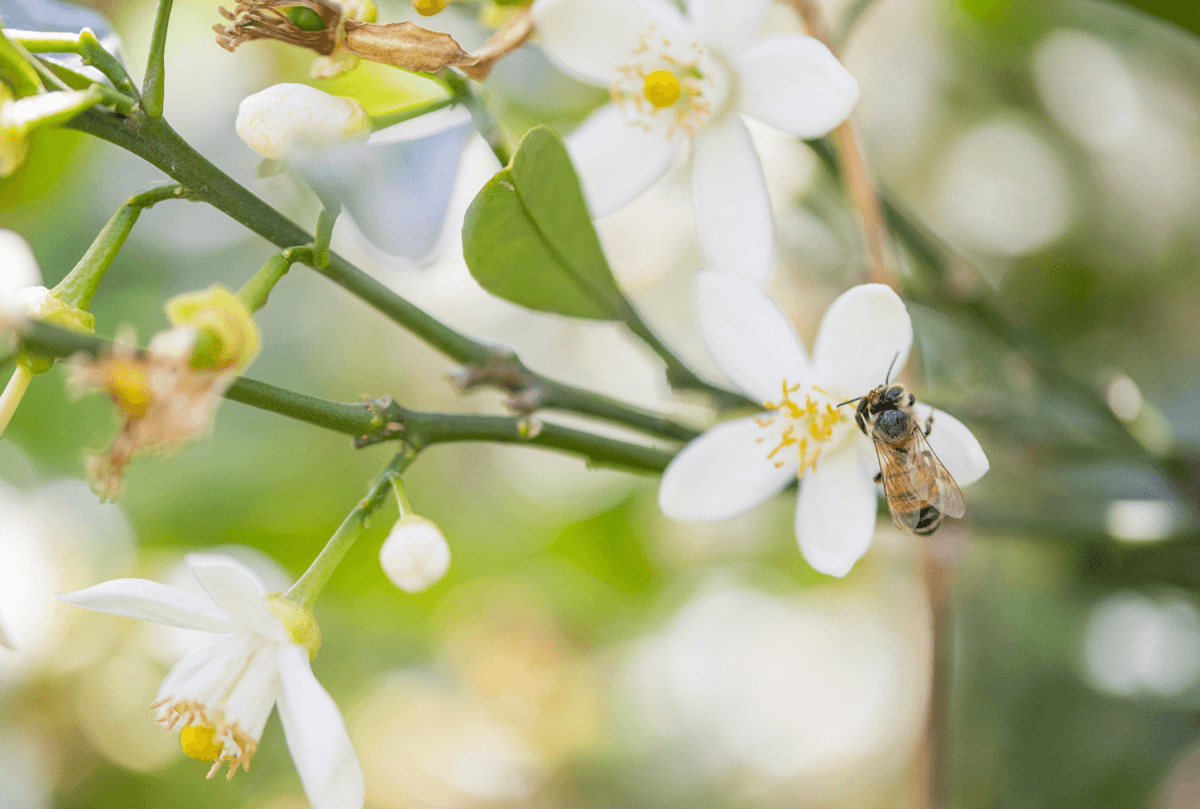
The value of being pure and natural
Takahashi Honey is located in Inazusa, Shimoda, down at the southern end of the Izu Peninsula, set among the beauty of nature.
Inazusa is surrounded by mountains, and its relatively cool summer and mild winter make this area a very suitable environment for the honeybee.
The Takahashi family live right alongside their honeybees in an area filled with lush nature.
The honeybees gather nectar from flowers and blossoms and store this in beehives.
When fully ripened in the hives, the honey is collected and bottled as is - completely in its natural form.
At Takahashi Honey no additives or refining is involved in any part of the honey making process.
We are proud to be able to offer this pure and natural honey - a gift from flowers and honeybees. Just a spoonful will satisfy your heart and soul.
We hope you enjoy it.
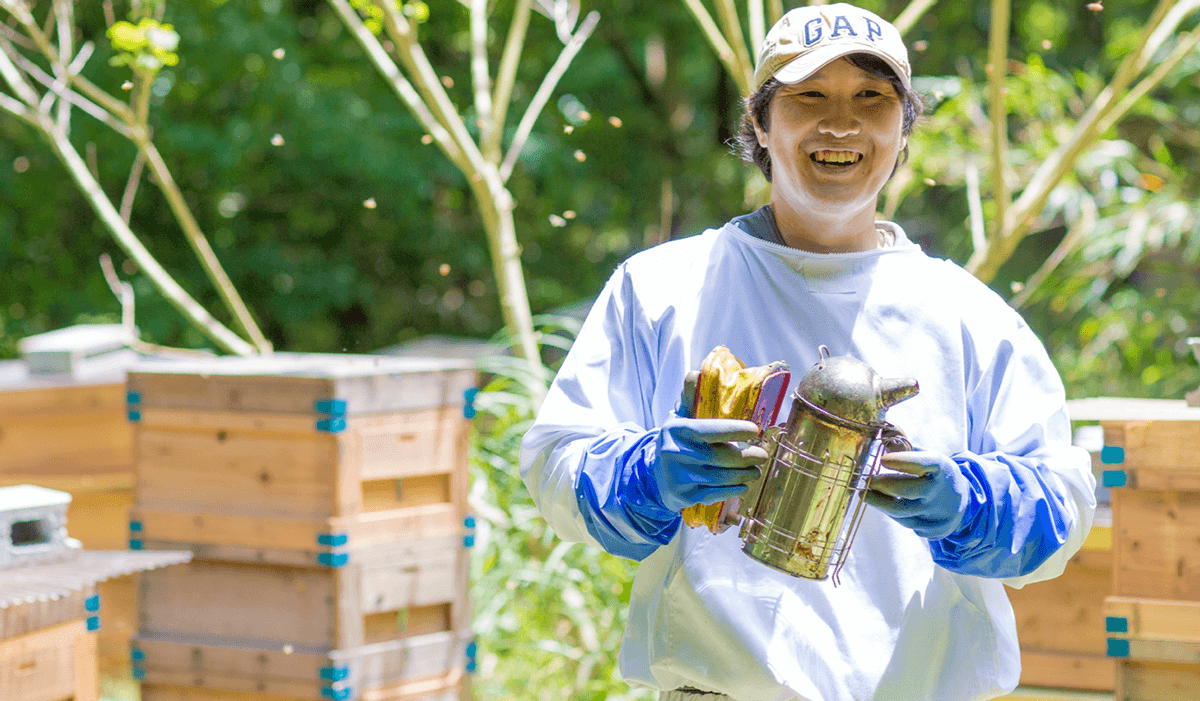
Beekeeper Teppei Takahashi
“If the bee disappeared off the face of the Earth, man would only have four years left to live.”
When I came across this quote, I was determined to become a beekeeper.
Did you know that pollination by the honeybee plays an important role in maintaining earth’s ecosystems?
Many of the fruits and vegetables that we eat every day need pollination by honeybees.
However, despite their importance, the honeybee population has been falling around the world.
Possible causes include climate change, and the use of pesticides and herbicides.
Some researchers warn that a global food shortage may occur if the honeybee population keeps falling at its current rate.
After learning this, I started to dream about creating an environment where the honeybee could happily thrive.

Naturally, the mountains of Shimoda
People usually associate Shimoda with its beautiful beaches and the sea. Yet, farming of many crops such as wasabi, strawberry, and rice has been conducted for countless generations in the valleys between, and on the slopes of, Shimoda’s mountains.
My journey as a beekeeper started by first cultivating wild and neglected lands in these mountains.
At first, I experienced repeated failures. Yet, after many attempts and many disappointments, I finally began to consistently produce tasty honey.
I believe that the production of delicious honey is all about creating an environment that keeps honeybees happy.
I thus cultivated the land, and planted plants and flowers - such as blueberry bushes and sunflowers - that would provide the pollen and nectar which the bees would eventually turn into honey.
I lovingly nurture and take care of the bees and feel that the honey they produce is truly a gift from nature.
I am committed to delivering the best honey possible from my environmentally friendly bee farm.
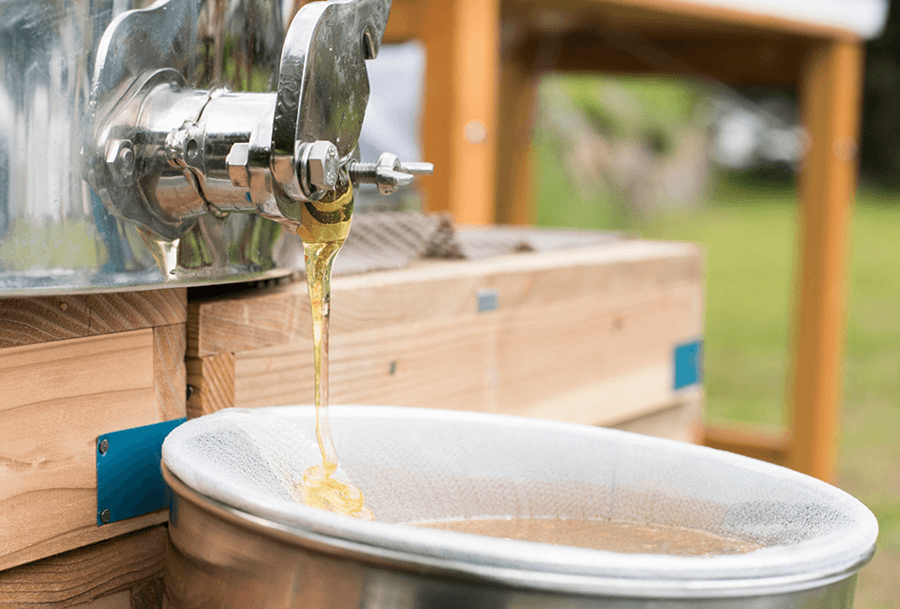
“A honeybee can collect only one teaspoonful of nectar in its entire life.”
The nectar that individual honeybees bring back to the hive has a low sugar content and cannot last long in this form.
So at the hive, honeybees dry and ripen the nectar by using their wings like a fan.
When the nectar ripens and the sugar content rises to about 80 %, its form changes so that it is naturally preserved, rich in taste, and aromatic - honey. We then collect this honey; the marvelous end product of the honeybees’ great efforts

Honey collection
Takahashi Honey’s priority is to create a low-stress environment for honeybees.
We thus collect honey only three times a year.
In the spring, the honeybees collect nectar from cherry blossoms and wisteria flowers.
In late spring, we collect honey for the first time in the year.
The honey produced from cherry blossoms is rare and valuable because they bloom only for about a week.
We collect the honey for the second time in early summer as the beehives become filled with honey produced from citrus fruit blossoms.
This honey is unique, filled with the flavors of the many types of citrus fruit growing in and around Shimoda.
After the rainy season in early summer, the fields and mountains fill with many flowers.
When the flowers of Japanese prickly-ash are blooming in the middle of the summer, the beehives literally overflow with honey again.
This is when we collect honey for the third and last time.
Even though the honeybees keep on collecting nectar past summer, we do not collect honey a fourth time as the honeybees need it as food to get through the winter.
We believe that keeping the honeybees away from stress to improve their health, handling them with loving care, and collecting honey with a feeling of appreciation, will naturally result in the production of delicious and pure honey.

The Goal of Takahashi Honey moving away from simple consumption to a circulating system
In Shimoda’s fields and on its mountains, flowers and blossoms bloom. Honeybees fly around gathering nectar and pollen for their family members waiting back in the hive.
When the honeybees visit flowers, they pollinate them.
Thanks to this pollination, many plants - such as cotton, the varied grasses that cattle feed on, and many of the fruit, nuts, and vegetables that we eat every day - can produce seeds and reproduce.
It is widely thought that of the 100 varieties of crops which account for about 90 percent of the food that we humans eat around the world, 70 percent of these are pollinated by bees.
Yet, the honeybee population has been falling in recent years.
Possible causes include climate change, and the use of pesticides and herbicides.
This fact drove me to create a safe environment for honeybees.
Moreover, in Shimoda, like in much of Japan, farmland and rice paddies are increasingly being abandoned by Japan’s aging population.
Due to this, we were able to take over some fields and restore them as farmland for honeybees. On our farm we are now growing blueberry bushes, lemon trees, and many types of vegetables using the help of honeybees, with the plants in turn providing nectar for them.
While the impact of what we do on our farm on the wider world is small, we believe that when small actions build up, it will lead to a happy future.
Takahashi Honey’s natural produce
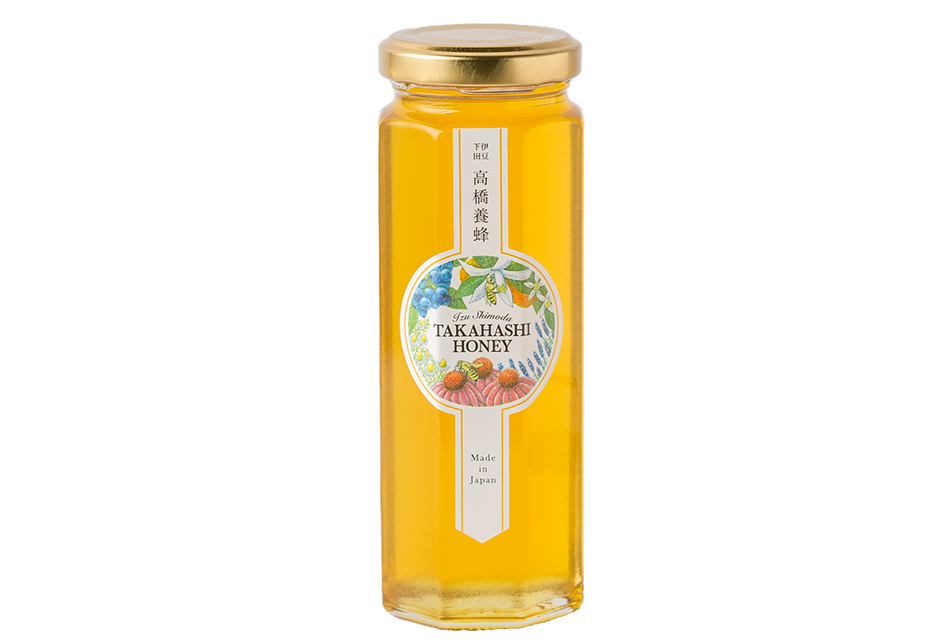
Citrus Honey
In Shimoda, the tangerine blossoms bloom in early May, and those of the New Summer Orange (Hyuganatsu) in late May, allowing our honeybees to produce a special citrus honey whose flowery aroma and taste will entice you the moment it hits your tongue.
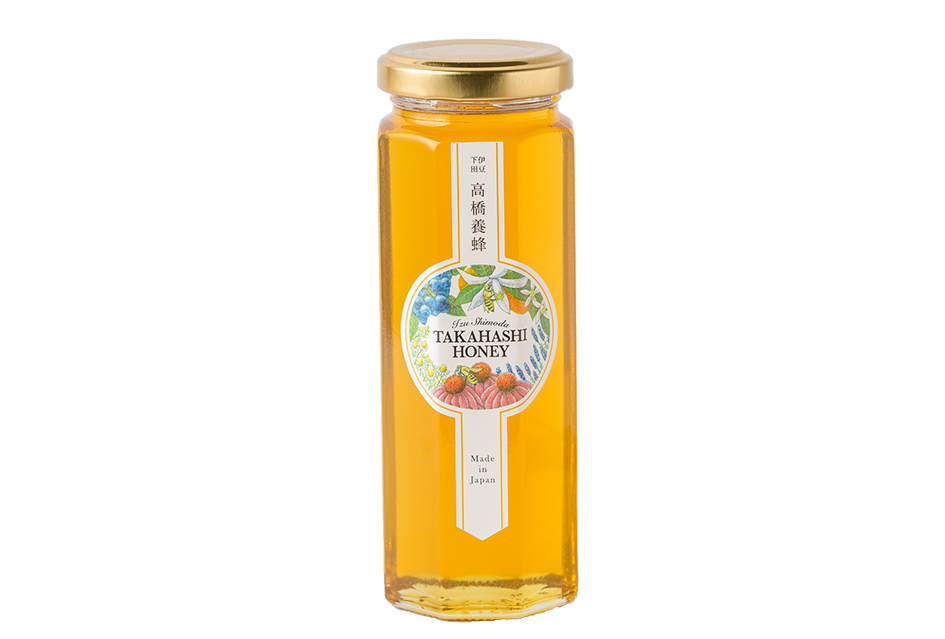
Flowers of Shimoda
This honey is produced as honeybees gather various nectar from the Japanese prickly-ash flower, citrus blossoms, and many other types of flowers blooming on the Takahashi Honey farm. As the name implies, the Japanese prickly-ash adds a prickly and uniquely refreshing flavor to the honey. Flowers of Shimoda may be the honey most favored by adults.
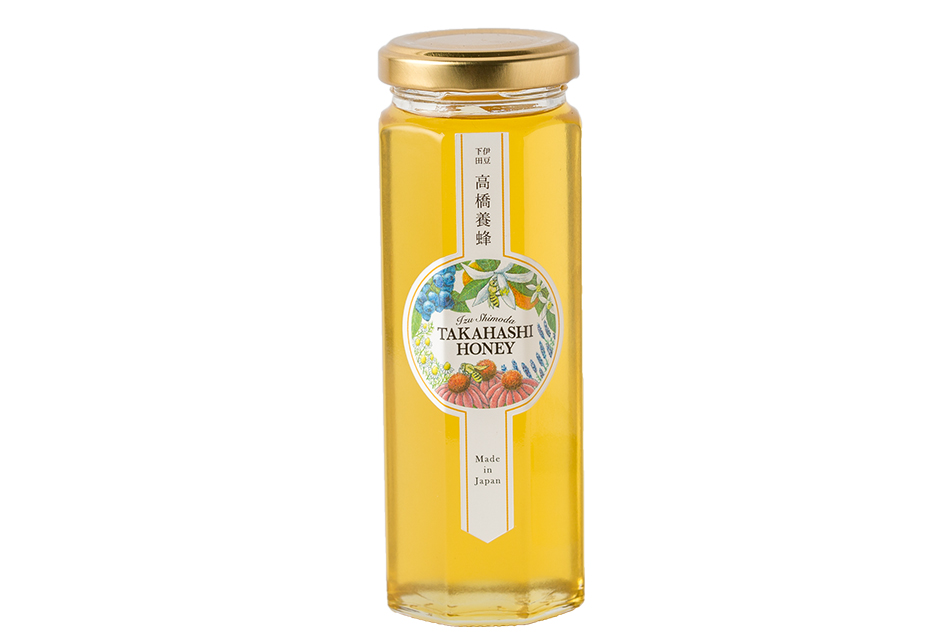
Wisteria & Cherry Blossom
From April to May, honeybees gather nectar from cherry blossoms and wisterias, both of them starting to bloom in early April and mid-April to mid-May, respectively. The short blooming period of the cherry blossom makes this product very rare and valuable. A flowery fragrance rises up as soon as the jar is opened and reminds us of the beautiful spring flowers from which this honey was made.
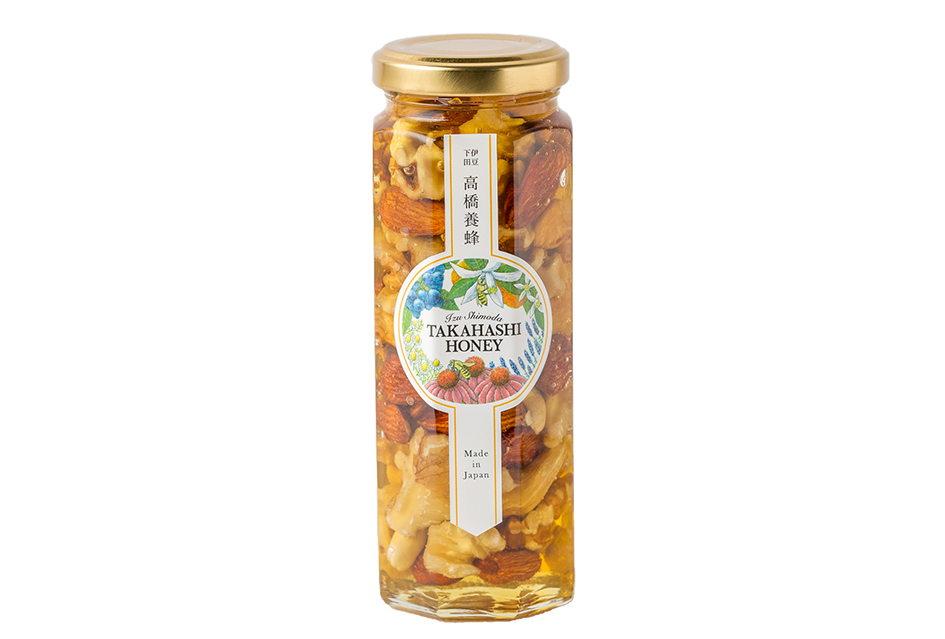
Honey-drowned Nuts
Walnuts, cashews, and almonds are immersed in Flowers of Shimoda honey for two entire weeks. These honey-soaked nuts go well with cheeses and salamis.
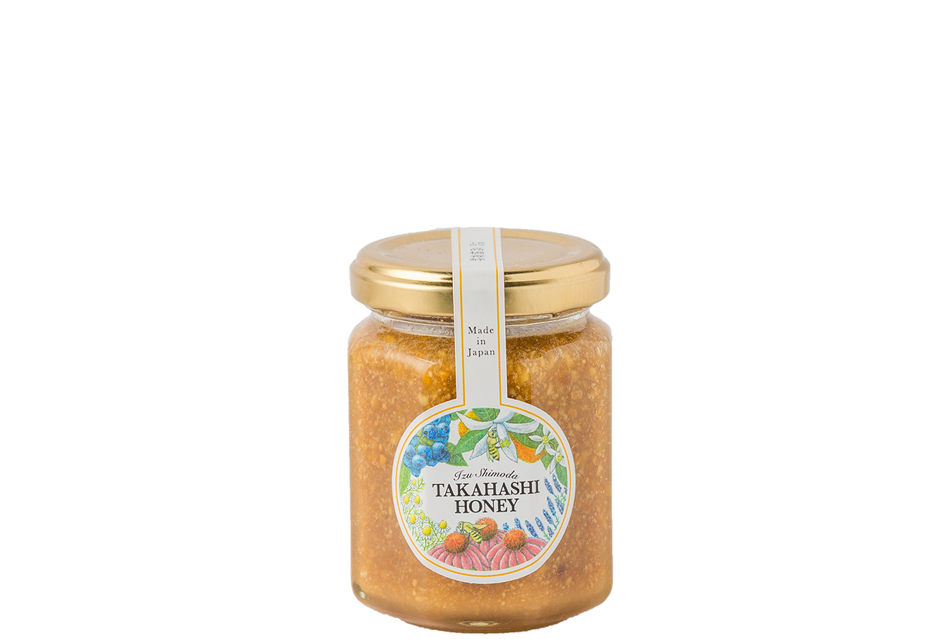
Peanut Honey
High-grade peanuts are mixed into Flowers of Shimoda honey. The long-lasting aroma of peanuts makes this honey suitable for spreading on toasts, and as toppings and garnishes on various dishes.
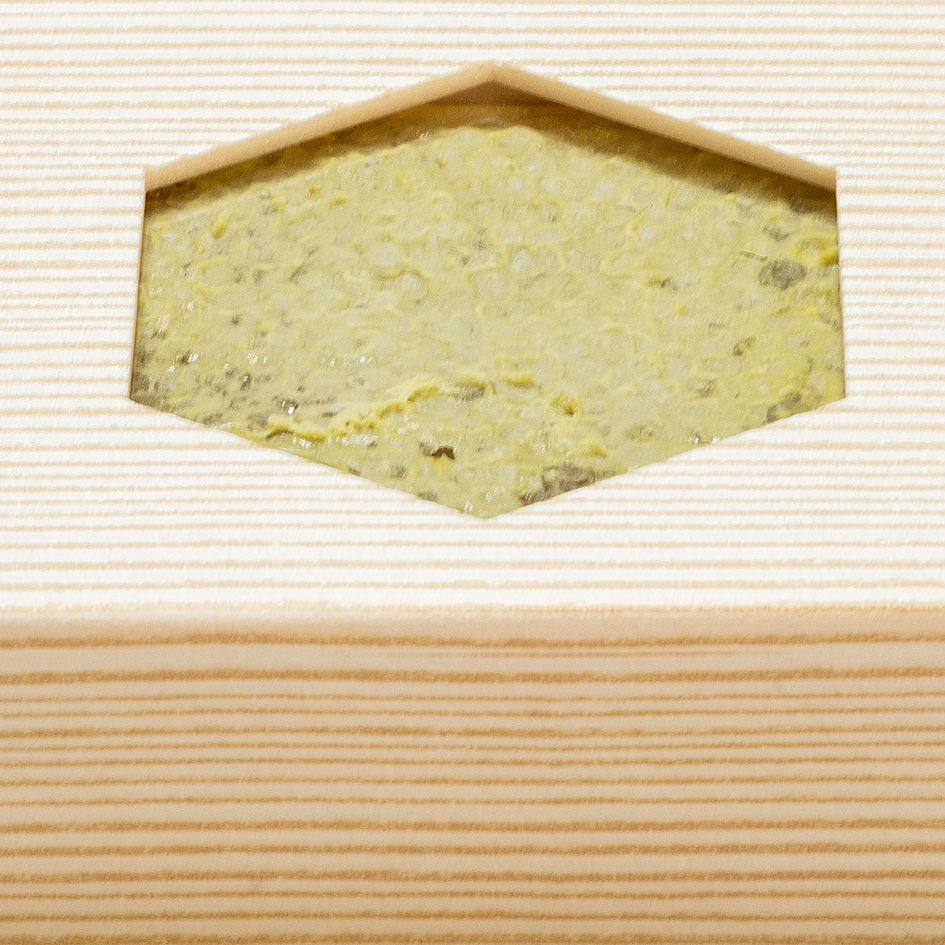
Honeycomb
Honeybees from Shimoda, Izu work hard gathering nectar from various blossoms and flowers around their hives to make honeycomb, and then fill it with honey. Once their work is complete, the honeycomb is simply harvested, cut and then put into a box, ready to be eaten. Just one bite of this honeycomb fills the mouth with the honey’s flowery fragrance and sweetness. This is the best honey a beekeeper can offer in all aspects - including freshness, taste, and flavor.
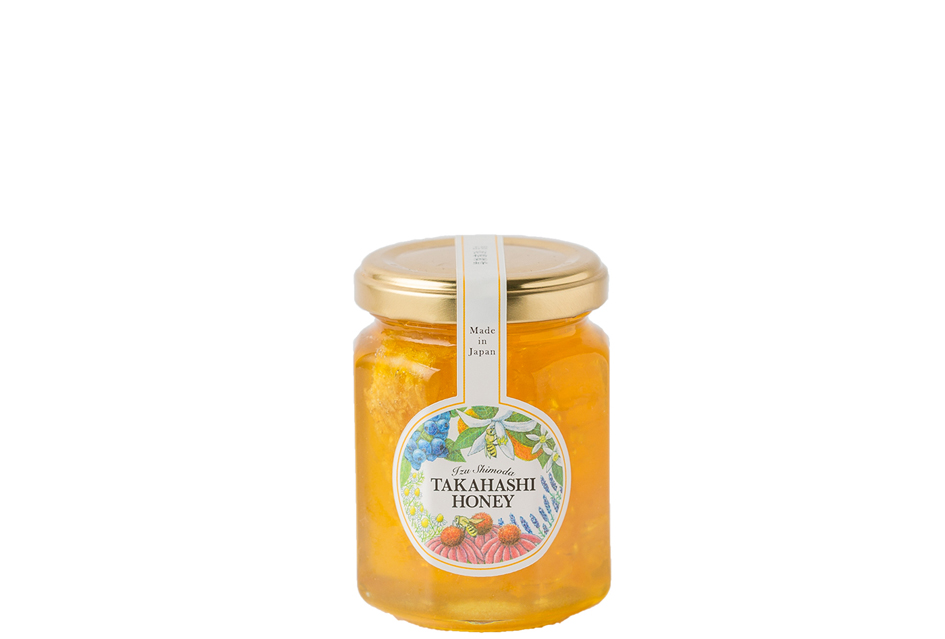
Comb & Honey
A piece of citrus blossom honeycomb is placed in a jar, and the jar then topped up with Citrus Honey. This is the ultimate type of honey in terms of freshness, aroma, taste, and nutritional value.
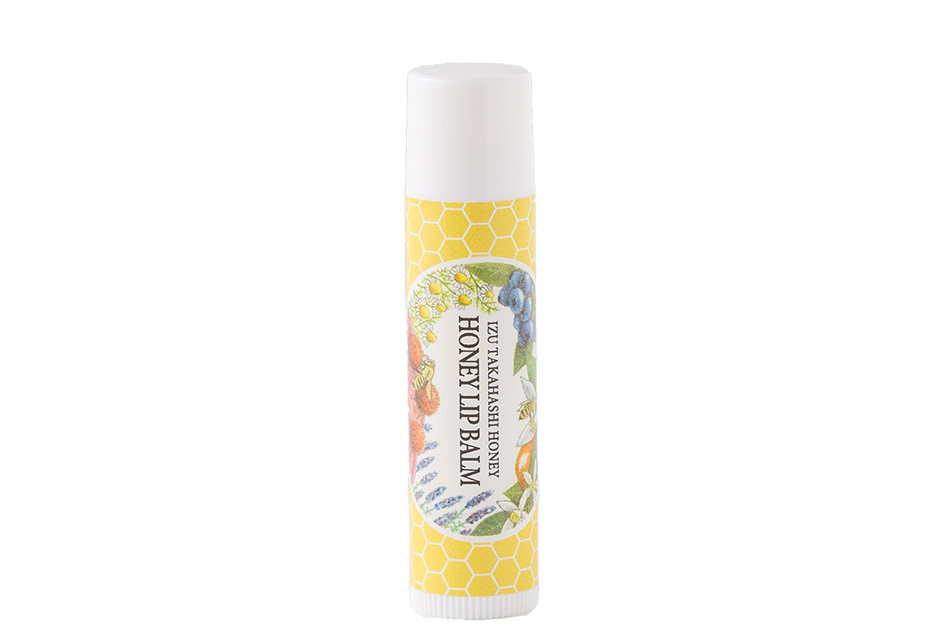
Honey Lip Balm
This lip balm is entirely made from natural ingredients including honey collected from Shimoda citrus blossoms, and beeswax collected from our farm’s own beehives. Patch testing has been conducted for the safety of people with sensitive skin. The oil of the bitter orange grown in Izu is used to add a fresh and relaxing aroma.
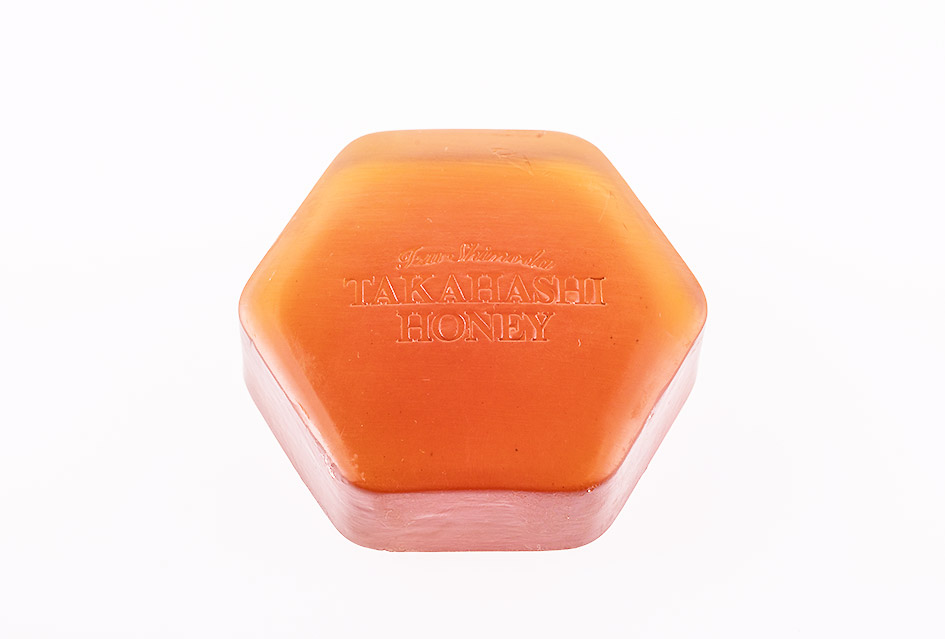
Izu Honey Soap
Honey produced from the many plants and flowers in Shimoda, Izu is used in this natural soap, along with milk from goats raised in the wide fields of Hokkaido. This naturally moisturizing soap is safe to use on sensitive skin, creates a rich lather, and releases a relaxing natural herbal aroma.
